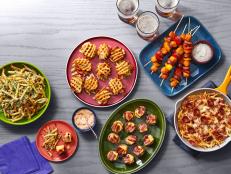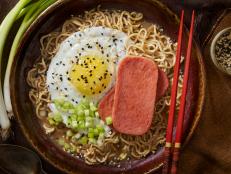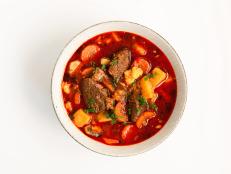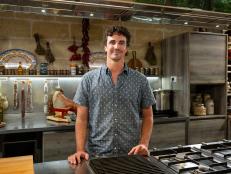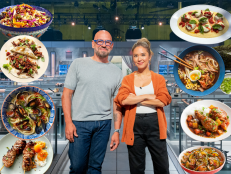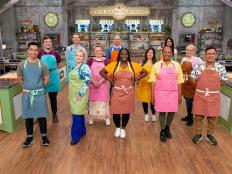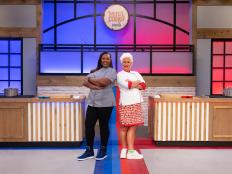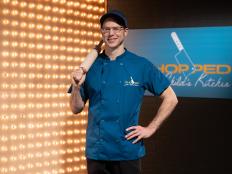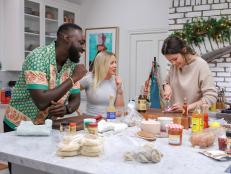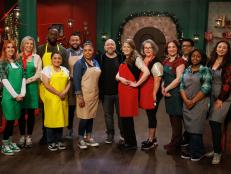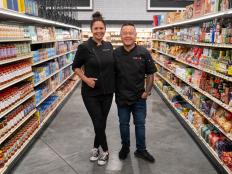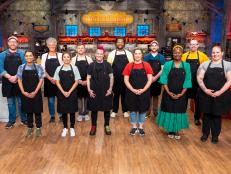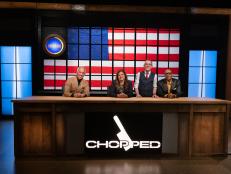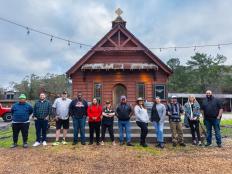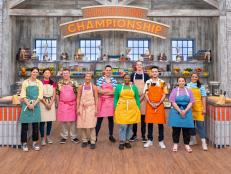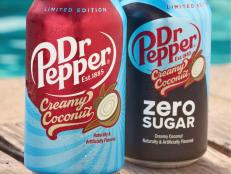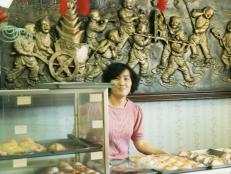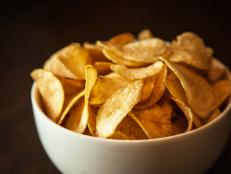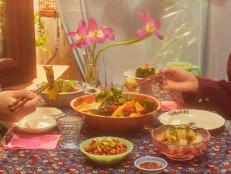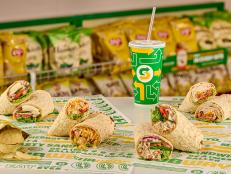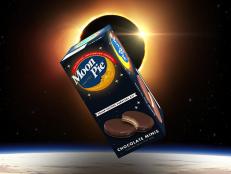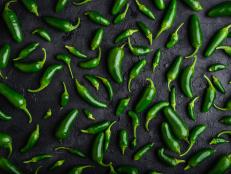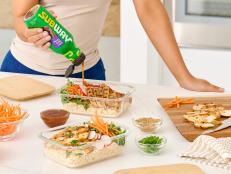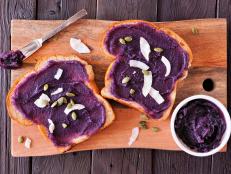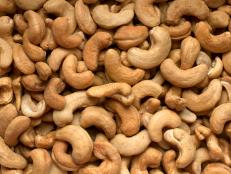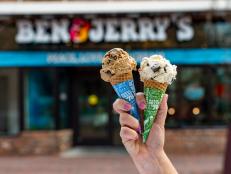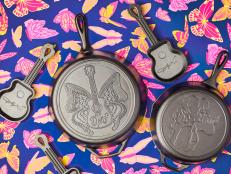On the Line with Bobby Flay at Bar Americain
At the restaurant that inspired his latest cookbook, Bobby Flay shows Food Network Magazine his other life as a working chef—and his unlikely rise to the top.

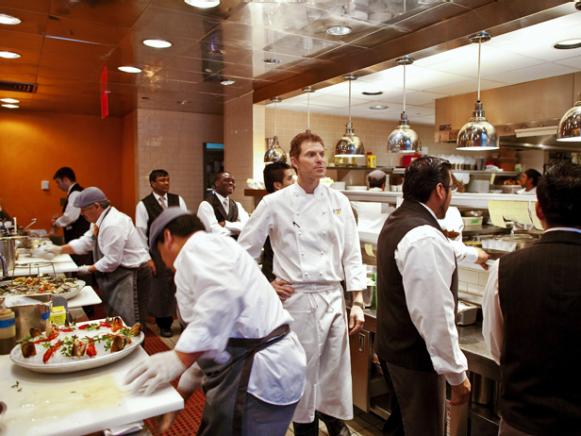
Mark Peterson , Mark Peterson no use of pictures without permission from photographer or agent
Something is wrong with the biscuits at one of Bobby Flay’s restaurants. Usually they’re light and flaky, but today they’re dense and too cakey. Bobby, who has been at Bar Americain—his busy midtown Manhattan brasserie—since 8:30 a.m., is on biscuit patrol. And he’s determined to solve the problem before lunch.
“I’m like the repairman,” the chef says, tying a crisp white apron over his jeans. “People take shortcuts all the time without realizing it. You have to constantly test things.” In Bobby’s case, this means regularly visiting 11 restaurants—two Bar Americains, three Mesa Grills, one Bobby Flay Steak and six Bobby’s Burger Palaces, in four states, Washington, D.C., and the Bahamas—for quality control. After today, he’ll make a pit stop at his Las Vegas spot en route to a two-week shoot in Los Angeles for Bobby Flay’s Barbecue Addiction, his new grilling show. Bobby can’t be at all of his restaurants all of the time, but he’s at them often enough to catch something like a less-than-perfect biscuit before it’s smothered with gravy and sent out to the dining room.
Bobby squeaks across the kitchen’s rubber-covered pathway to the pastry section and puts an affectionate arm around the pastry chef responsible for the problem biscuits. Her nook of a workspace is flanked by racks of sheet pans lined with pecan brittle and shelves loaded with vats of almond extract, cocoa powder and maple syrup. Bobby plunges his hands into a mixture of flour and butter. “You want to see the butter running through it,” he says. Sure enough, the butter runs through Bobby’s dough in loose strands. He then shapes the biscuits and pauses to admire his work. “See that? That’s going to make a nice flaky biscuit.”
It’s clear, as he finishes this hands-on demonstration, that Bobby is more of a professor than a repairman. But Professor Flay has a surprising secret: The star chef didn’t finish high school, and by his own admission, he barely graduated from the French Culinary Institute in 1984. “I cut the maximum number of classes you could cut and still graduate,” he says. Bobby learned nearly everything he knows from sweating through decades in New York City restaurant kitchens. There, he discovered new ingredients and flavors and built up the courage to experiment with them on his own. Bobby calls Bar Americain the product of his whole career, a restaurant that embodies everything he has learned along the way. He has included many of these lessons in his new 'Bobby Flay’s Bar Americain Cookbook,' but before we dove into his 11th book, we wanted to know just how this self-deprecating, not-so-traditional student got to the head of the class.
To understand Bobby, you have to start at the beginning, in the late 1970s, when he was a skinny teenager with dusty red hair hanging out with his buddies in New York City diners. He wasn’t a bad kid exactly; he just didn’t like school. “The school would call my mom to say I hadn’t shown up, and she’d ask me what I’d been doing all day,” Bobby says. “I’d say, ‘Well, first we got breakfast. Then we went to the racetrack?’ ”
By senior year, when Bobby quit going to school altogether, his father volunteered him to fill in for a busboy at the namesake restaurant of his business partner, Joe Allen. When the stint ended, the head chef asked Bobby if he wanted to work in the kitchen. He decided that he did. “Cooking was gratifying,” Bobby says. “I was creating something. At school, I got no results.”
Soon Bobby set his sights on a much bigger job. At the time, chef Jonathan Waxman’s groundbreaking Manhattan restaurants Jams and Bud’s were bringing a new kind of American cooking to the East Coast, one that involved seasonal ingredients, bold flavors and hefty California wines. Bobby wanted in. So one day, he visited Waxman and straight-up asked for a job.
“He was a skinny, freckled kid who must have weighed 95 pounds and looked like a dishwasher,” Waxman remembers. “But I really liked his chutzpah, so I hired him.”
For Bobby, this was the beginning of his real culinary education. “I fell in love with all these flavors—fresh chiles, blue cornmeal, cilantro,” Bobby says. To him, the punchy flavors were the culinary equivalent of an amusement park.
Waxman was impressed with Bobby’s perseverance. “Bud’s fed 600 people a night, and the menu had lots of different ingredients,” he says. “I threw Bobby in the deep end, and he didn’t fail. Was he better than everyone else? No. But Bobby was one of the few people up to the challenge.”
The food Bobby was cooking in those days had roots in all corners of American cuisine—Cajun, Californian, Southwestern, Southern. It was the perfect place for the kid who didn’t like to be tied down. And it was the ideal training ground for a chef who would become equally adept with Cuban flavors from Florida, bourbon glazes from Kentucky, chowders from New England and, of course, anything Southwestern, the cuisine for which he is best known since he opened Mesa Grill—a polished Southwestern restaurant—in 1991 at just 26 years of age.
“I’m a regional American chef,” Bobby declares. The label may sound ordinary, but Bobby wants to remind us of one thing: America is a food superpower. We’re in a period of self-loathing about our eating habits—too much processed food, a sugar addiction and an obesity epidemic—but America is actually a fantastic place to eat. Bar Americain is Bobby’s homage to everything he loves about American food, a restaurant where he proudly serves biscuits and cream gravy — once he works out the problem with the biscuits, of course.
It’s coming up on noon at Bar Americain, and Bobby’s energy matches that of the dining room, which is filled with hungry, pressed-for-time suits. He zips over to a deep fryer: “These chips are getting too dark!” he yells to no one in particular. Next, he’s stirring a pot of bubbling cranberries, then he’s standing at the raw bar in front of the open kitchen like a captain at the prow of a ship, rolling up his sleeves so he can shuck some oysters. Orders start spewing out of the computer at a somewhat alarming rate, and soon dishes are flying out of the kitchen: sweet Vidalia onion soup topped with aged Vermont cheddar; panko-crusted chicken blanketed with California triple cream cheese and slices of country ham. A couple of tourists approach, and Bobby smiles quickly for their cameras, then turns to pluck a slice of ham off a lobster club and nudge it back toward the kitchen. “This ham isn’t crispy enough,” he says.
Bobby is always looking to make improvements, but he knows that his battalion of chefs and servers has the booming lunch service under control. The kitchen is where he wants to be more than anything (yes, more than in front of the camera), but it’s time for him to go. He signs a few cookbooks, then heads out the door to get ready for his trip. His other life awaits.
























